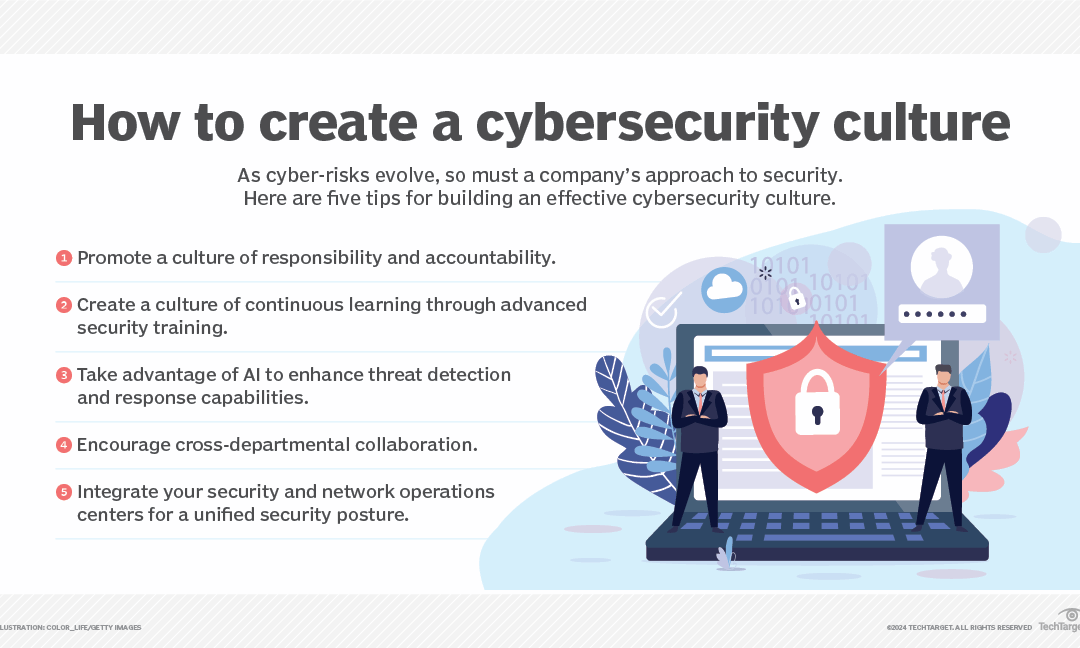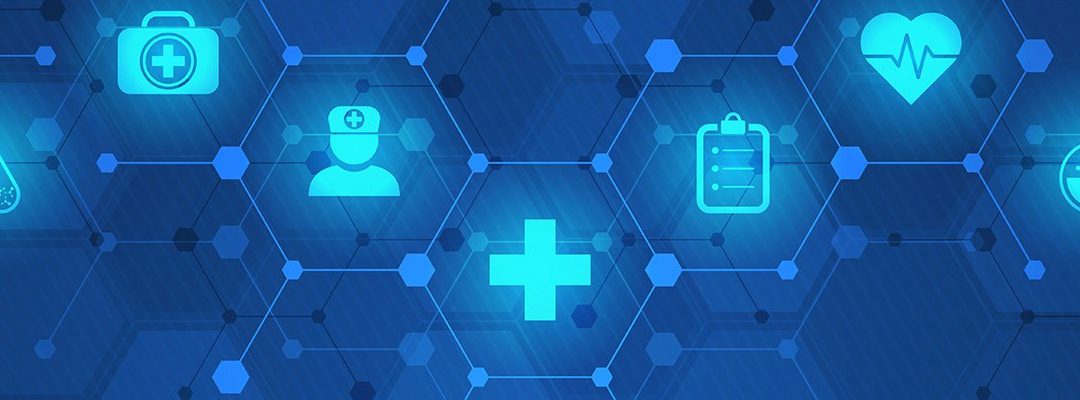Understand the Holiday Season Cyber Threats The holiday season is a time for joy, celebration, and generosity. However, this...


Understand the Holiday Season Cyber Threats The holiday season is a time for joy, celebration, and generosity. However, this...

Cybercriminals steal credit card? Cybercriminals have various methods at their disposal to hack and exploit credit card...

This in-depth cybersecurity planning guide provides information and advice to help organizations develop a successful strategy...

While home health agencies face distinct health IT challenges, collaboration and innovation are crucial for overcoming these...

The umbrella term malware is one of the greatest cybersecurity threats enterprises face. Learn about 12 common types of malware...
IT Recovery Solutions have become crucial to business continuity and data management. As enterprises increasingly rely on digital operations, the need for robust, efficient, and adaptable recovery strategies has never been more critical. This article delves into the latest trends and innovations in IT recovery solutions for 2024, highlighting key strategies and technologies that businesses should consider to ensure resilience and operational continuity.
One of the most significant trends in 2024 is the shift towards cloud-native and containerized applications. Traditional recovery methods often struggle to handle the dynamic nature of these modern applications, leading to longer downtimes and more complex restoration processes. The growing adoption of containerization technologies and orchestration platforms is driving the development of specialized disaster recovery solutions. These solutions offer rapid application recovery, rollback capabilities, and scalability during disaster scenarios, ensuring that businesses can maintain operational efficiency even in crises (KubeStack Backup) (Veeam Software).
Speed and consistency are paramount in modern recovery solutions. Businesses are increasingly focusing on strategies that enable faster recovery times, leveraging advanced backup and storage solutions. A robust network infrastructure that supports rapid data transfer and restoration is essential. Moreover, consistent database recovery is a critical component, given the integral role of databases in business operations. Integrating software that manages and executes rapid restoration processes helps minimize disruptions and significantly reduces recovery time (Veeam Software).
The adoption of multi-cloud and hybrid cloud strategies is on the rise, driven by the need for more resilient and flexible disaster recovery solutions. Utilizing a combination of different cloud services and providers helps organizations avoid vendor lock-in and capitalize on the unique strengths of each platform. Hybrid cloud environments, which combine the security and control of private clouds with the scalability and cost-effectiveness of public clouds, offer a tailored approach to disaster recovery that can adapt to specific organizational needs (Veeam Software).
The adoption of multi-cloud and hybrid cloud strategies is increasingly popular for enhancing disaster recovery solutions. Here are the key points regarding these strategies:
Ransomware attacks have become a pervasive threat, prompting businesses to develop robust recovery strategies specifically designed to counter this menace. Effective ransomware recovery involves implementing strong security measures, regular backups, and comprehensive employee education on cybersecurity practices. Building a resilient infrastructure that can quickly recover from ransomware attacks is crucial to maintaining business continuity. IT Recovery Solutions
| Strategy Component | Description | Benefits |
|---|---|---|
| Regular Data Backups | Frequent and secure backups of data | Ensures data availability and integrity |
| Strong Security Measures | Advanced tools and protocols to prevent ransomware infections | Reduces risk of ransomware infiltration |
| Employee Education | Training and simulations to raise cybersecurity awareness | Decreases likelihood of successful attacks |
| Incident Response Plan | Detailed plan and team roles for responding to attacks | Enhances readiness and coordinated response |
| Data Recovery Procedures | Methods for restoring data and verifying its integrity | Ensures quick and reliable data recovery |
| Continuous Monitoring | Tools for real-time threat detection and response | Identifies and mitigates threats promptly |
| Business Continuity Planning | Redundant systems and disaster recovery testing | Maintains operations during and after an attack |
Implementing these ransomware recovery strategies can help businesses prepare for, respond to, and recover from ransomware attacks effectively. Building a resilient infrastructure and fostering a culture of cybersecurity awareness are essential steps in safeguarding against this evolving threat.
With the increasing complexity and volume of data, thorough testing and validation of disaster recovery plans have become more important than ever. Consistent testing not only ensures that recovery strategies work effectively but also identifies areas that need improvement. By adopting a proactive stance, organizations can better prepare for potential disasters, reducing the risk of extended downtimes and data loss (Veeam Software).
Artificial intelligence (AI) and machine learning (ML) are transforming the landscape of IT recovery solutions. These technologies enhance predictive analytics, allowing businesses to anticipate potential failures and take preventive measures. AI-driven automation can streamline recovery processes, reduce human error, and improve the overall efficiency of disaster recovery plans. (Veeam Software).
Continuous Data Protection (CDP) is gaining traction as a preferred method for ensuring data resilience. Unlike traditional backup methods that create snapshots at set intervals, CDP continuously captures data changes, ensuring that no data is lost. This approach provides a more granular level of data protection and significantly reduces recovery point objectives (RPOs) (Veeam Software).
Key Features and Benefits of CDP:
| Feature | Continuous Data Protection (CDP) | Traditional Backup |
|---|---|---|
| Data Capture Frequency | Continuous | Scheduled Intervals |
| Recovery Point Objective | Near-Zero | Varies (e.g., daily, weekly) |
| Data Granularity | High | Medium to Low |
| Operational Disruption | Minimal | Potential Interruptions |
| Scalability | High | Varies |
| Cost | Higher Initial, Long-Term Savings | Lower Initial, Potential Higher Long-Term Costs |
| Compliance Support | Strong | Varies |
| Recovery Time Objective | Fast | Slower |
Continuous Data Protection (CDP) represents a modern approach to data backup and recovery, offering numerous advantages over traditional methods. Its ability to capture every data change and provide near-instantaneous recovery makes it an invaluable tool for businesses aiming to enhance their data resilience and minimize the risk of data loss.
As we move further into 2024. The landscape of IT recovery solutions continues to evolve. Driven by advancements in technology and the growing complexity of business operations. By embracing cloud-native solutions, prioritizing rapid and consistent data recovery, and adopting multi-cloud and hybrid strategies. And leveraging AI and ML, businesses can enhance their resilience and ensure operational continuity. Continuous testing and validation, along with robust ransomware recovery strategies and the implementation of CDP, are essential components of a modern recovery plan. Staying abreast of these trends will help organizations navigate the challenges of the digital age and safeguard their critical data and operations. (KubeStack Backup) (Veeam Software).
Boost Your Business Efficiency with Microsoft 365 and Western IT Services
Worried about being a target for phishing attacks? Protect your company today!
Understand the Holiday Season Cyber Threats The holiday season is a time for joy, celebration, and generosity....
Cybercriminals steal credit card? Cybercriminals have various methods at their disposal to hack and exploit credit...